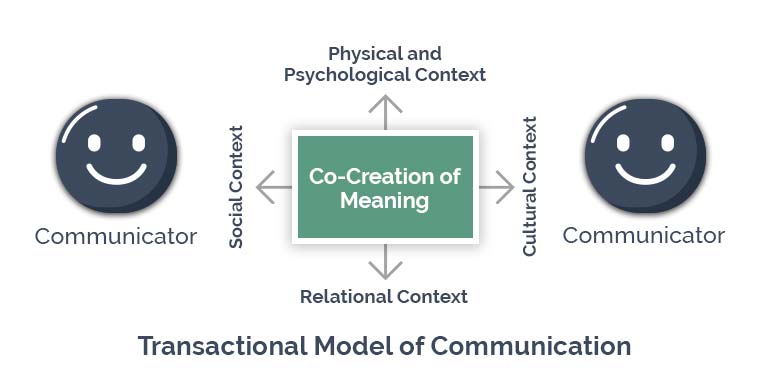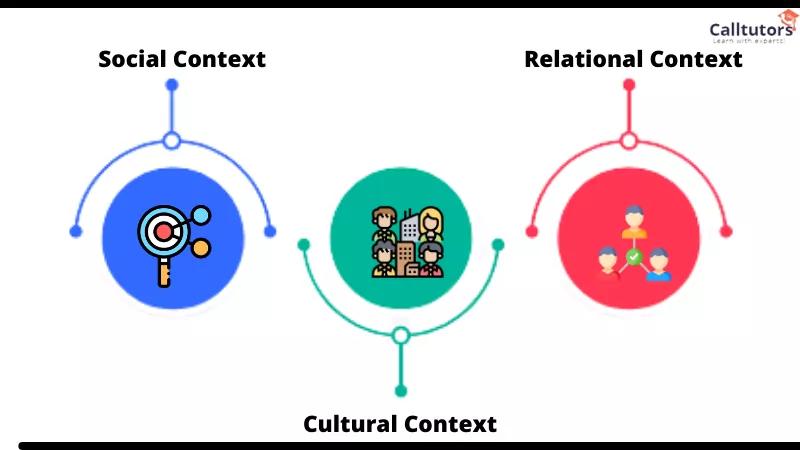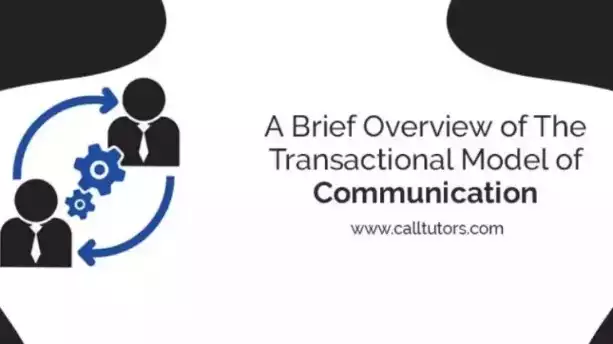Do you want to communicate better? Want to know about the transactional model of communication? If yes, then welcome! Here we give you the complete information regarding the transactional communication model.
Communication is a difficult process. It is tough to know where or with whom a communication meeting begins and ends. Communication models help in explaining the process by providing a representation of the many aspects.
What Is The Transnational Model Of Communication?
Table of Contents
Communication can happen in different ways and each way has its own unique value. The basic ways of communicating are referred to as the transactional model. In this form of communication, you are waiting for the response that comes after you’ve sent out a message.
This element of reciprocity creates a give-and-take relationship. Only one person can send the information at a time, and the other person must wait until the first person is finished before they can send their own information. This can be seen in many different ways in the world, such as talking to someone face-to-face, sending an email, or posting on Facebook.
Types of communication model-
| 1. Linear model of communication | It is a one-way communication channel, or we can say it is a non-interactive communication. For example, sending a memo, giving a speech, or a television broadcast. |
| 2. Transactional model of communication | It is two-way communication or interaction. In this conversation, two parties include, i.e., sender and receiver. It happens only when both parties are present. It means it conducts in real-time. For example, conversation on skype, through telephonic call, etc. |
In this blog, you will come to know about the transactional communication model.
The transactional model of communication

An overview
The transactional model can be measured as a simplistic one where people believe the receiver and sender are independent parties. The roles of receiver and sender in the transaction model differ knowingly from the other models. It is an important addition to the communication model. The reason behind this is that it allows people to do effective communication by relaxing their capability to adapt communication.
For example, verbal communication through telephonic calls. It is one of the crucial models for business studies students.
Transactional Model Concept
This model of communication is the procedure of continuous transformation and change. Because of this, it accepts the contributors to be self-governing and also acts in any manner they need. Since both receiver and sender are essential to keep the interaction active in the transactional model. For example, the transactional model is not possible if the receiver is not giving feedback to the sender.
This is the most usual method of communication. Ordinary interactions and talk are also effective forms of interaction or communication. It is more effective and well-organized for contributors with related individual and environmental aspects. For example, Obviously, the people who recognize each other will have more effective communication than between unknown people.
In this model, the reliability and efficiency of interconnected messages also are uncertain on the method used. For example, the same communication in a personal way might not be supposed through an individual in the same manner once it is directly through a telephone.
Basic characteristics of the transactional model of communication-
There are the three basic characteristics-
- Communication develops from the very first till the existing time.
- The dependency of this communication is mainly on its past.
- Time concept is also the main point of it.

Factors Affecting the Transactional Model
Many factors affect the communication process in a transaction model. All factors can be noise or communication barriers in the environment. Physical noise, physiological noise, and psychological noise are examples of environmental noise.
The transactional model links communication to an individual’s or a group’s social reality in social, cultural, and relational contexts. Their answers are unpredictable because they all come from various backgrounds and have different mental illnesses. Physical, cultural, environmental, social, psychological, emotional, and other elements influence communication patterns.
Cultural systems, relational situations, and social systems are the most powerful parts of communication, but physical and psychological contexts significantly impact communication, either promoting or undermining it.

Social Context
In communication, the social context refers to a society’s conventions, values, laws, and other limits on communicating within a certain range. It also contains rules that limit people’s capacity to communicate. Society shapes the way a person communicates. Greeting people when you meet them, thanking them, apologizing, and so on are some examples.
People can also learn communication by trial and error, resulting in social exclusion and embarrassment. This model also adds that not only does social reality assist people in communicating, but communication also influences self and social reality. Communication is used not just to send and receive messages but also to create and maintain relationships that help form a community.
Cultural Context
A person’s cultural context is their way of life and identity. Caste, class, race, ethnicity, gender, and other factors contribute to communication. When two people belong to the same cultural group, they will communicate more effectively.
Communication makes cultural identities. It changes a person’s conversational pattern. Cultural marginalization obstructs cultural groups’ communication with the rest of society. When communicating with intercultural groups, people become self-conscious. It is also considered inappropriate by some.
People have a closed mindset about the different groups of people with whom they interact. Attitudes, cultural beliefs, experiences, social upbringing, perception of reality, mindset, and various other things all influence how people respond.
Relational Context
It relates to relationship history and manners.
A person talks differently with an old friend than with a stranger. When talking with strangers, manners take the role of communication. Manners are more choreographed and derive from pre-established standards and values, making conversation more challenging. People communicate differently depending on the type of connection and roles. Communication takes place on both parties’ common networks at all times.
Example of the transactional model of communication
Examples of this communication are a face-to-face meeting, a chat session, a telephone call, interactive training, a skype call, and a meeting where all the members are participating and sharing their ideas.
Example of a face to face meeting
David- Hi,
John- Oh hello, how are you?
David- I am absolutely fine. What are you up to today?
John- Nothing much new, just going to work. What about you?
Advantages of Transactional Communication Models
Feedback: The transactional model allows for feedback, which is essential for effective communication. Feedback enables the sender to understand how their message is being received and if any adjustments are needed.
Two-way communication: This model emphasizes that communication is a two-way process, allowing both the sender and receiver to exchange messages, respond to each other, and engage in a conversation.
Contextual: The transactional model considers communication as being shaped by the context, such as the environment, culture, and the relationship between the sender and the receiver. This helps to improve understanding and interpretation of the message.
Dynamic: The transactional model recognizes that communication is a dynamic process that is constantly changing, and messages are exchanged simultaneously between the sender and receiver.
Disadvantages Transactional Communication Models
Misinterpretation: The transactional model allows for feedback, but it also increases the chances of misinterpretation. This can happen when the receiver misunderstands the message, leading to confusion and miscommunication.
Time-consuming: The transactional model can be time-consuming since it involves a lot of feedback and interaction. This can make it difficult to communicate quickly or efficiently, especially in situations where time is of the essence.
Complexity: The transactional model is complex, and it requires both the sender and receiver to actively engage in the communication process. This can be challenging when one or both parties are not fully engaged.
Cultural Differences: The transactional model recognizes that context shapes communication, but cultural differences can also impact communication. When dealing with individuals from different cultures, contextual differences may cause misunderstandings or misinterpretations.
Criticism of the transactional model of communication
- Without a verbal reply, the sender can’t be certain that the receiver got the message in the same manner as he sends it. The response is an essential part of the interaction or communication procedure, mainly in relational communication, because it provides a space to explain misunderstandings.
- The transactional model also provides the possibility for noise since the interaction or communication is a face-to-face conversation. For example, if some of the employees are talking to each other in the meeting and in this way, they are restricting in fulfilling the proper meeting’s goal.
There are three implications
- Transactional” signifies that communication is not a one time process. It is a continuously changing and enduring process. Individuals are not the same, and they change as per the requirements and collaboration. The environment also changes as per the circumstances.
- In any transactional procedure, each component exists concerning all other components. There is this interdependence between them. There are no uses for the message until the receiver does not understand.
- Each individual in this communication procedure reacts unexpectedly to several factors, for example, message meaning, previous experiences, cultural beliefs, attitudes, and confidence. So, these are some inferences in this model.
Bonus point-
How is a transactional model of communication different from a linear model of communication?
| Transactional model | Linear model |
| Use for interpersonal communication | Use for mass communications |
| Include the concept of noise | Concept of noise is not included in it |
| Include the concept of noise | Feedback is not included |
| Includes non-verbal communication | Doesn’t include non-verbal communication |

Conclusion (transactional model of communication)
Now you have seen that in the transactional model, the communication is an enduring circular procedure. The transactional model of communication has several codependent components and processes, comprising the decoding and encoding processes, the correspondent, message, noise and channel. It also relates to communication with communal reality; national upbringing even relational background (relationships). Non-verbal response like gesticulations, body language, is also measured as the response in this model. If you also need management assignment help, then contact our professional experts.
FAQ Related To transactional model of communication
What are the three standard models of communication?
The three standard models of communication are the Linear, Interactive and Transactional models.
What are the basic characteristics of a Transactional Model?
In the Transactional communication model, the sender encodes the information using speech or writing and sends it to the receiver. Then the receiver decodes the message by reading or listening and responds by following the same process.
What is the difference between transactional and transmission models of communication?
The transmission model allows only one-way communication, whereas the Transactional model includes two-way communication between sender and receiver.
What are the similarities of transactional model and transmission model?
Sender, message, receiver, channel, noise, feedback, and decoding are the similarities between transactional and transmission model of communication.
What are the examples of a transactional model of communication?
A telephone call, personal meeting, video call, and chatting are examples of the transactional model of communication.
What is another name of the transactional model of communication?
Another name of the transactional model is the circular model of communication.



